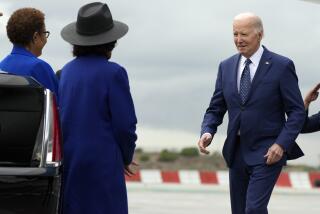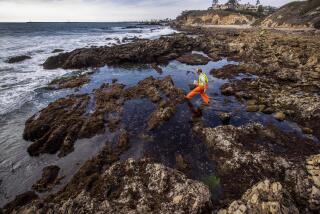New Safety Standards Proposed for Cruise Lines : Ships: Proposal would require, among other things, sprinklers and smoke detectors on all lines, and clearer signs marking escape routes.
- Share via
Just how safe is your cruise ship?
While much attention is being given to airline safety these days, there is growing concern about passenger ship safety in light of two maritime disasters--the capsizing of the ferry Herald of Free Enterprise in the English Channel in 1987, which resulted in 134 deaths, and a fire aboard the Scandinavian Star in the North Sea on April 7, 1990, that killed 158.
The International Maritime Organization, a United Nations agency that governs the safety of passenger ships in international waters, proposed at a meeting in London in May that all cruise ships be required to meet new safety standards. These standards would be phased in gradually, between 1994 and 2010.
William O’Neil, secretary-general of the IMO, warned of a “very considerable safety gap” between new and old ships in the industry.
The proposal isn’t expected to be formally adopted until next April, when the IMO’s Maritime Safety Committee is scheduled to meet next. Once approved, the new rules would go through a one-year period of circulation throughout the cruise industry, then take effect six months later, in the fall of 1993.
“Age itself doesn’t mean unsafe,” said John Estes, president of the Washington-based International Council of Cruise Lines, an association that represents 17 foreign-flag cruise lines. “While there are improvements that can and should be made, one shouldn’t automatically conclude that an older ship is unsafe in terms of safety enhancements. What the IMO proposal will ultimately create is just a consistency in safety rules at sea.”
Currently, any ship built after May 25, 1980, has to satisfy the Safety of Life at Sea, or SOLAS, standards that were adopted in 1974 at the last international safety convention held by the IMO. These standards apply to any vessel that carries 36 or more passengers through international waters.
But ships built before May 25, 1980--which is more than 70% of liners roaming the oceans today--were given immunity from the 1974 SOLAS safety standards since it was expected that most of these vessels would soon be leaving sea-going service. However, many of those ships are still sailing today.
According to the 1974 SOLAS code, if a ship was built from scratch, the structural material had to be noncombustible, and the builders had a choice of putting in heat detectors or a sprinkler system. If it was an existing ship, builders didn’t have to rip out whole sections, but they were required to put in additional steel bulkheads or walls, among other safety enhancements.
If a ship has been greatly altered, such as when it is stretched to offer more cabins and public space, it also must meet the 1974 SOLAS standards.
Some cruise lines have voluntarily brought ships built before May, 1980, up to SOLAS standards.
In general, cruise ships have a good safety record. According to National Transportation Safety Board records from 1974 to 1988, only two deaths occurred on foreign-flag cruise ships sailing from the United States, which accounts for the vast majority of U.S. departures. But there have been occasional mishaps involving passenger ships. Two years ago, on Feb. 10, 1989, the Carnival Cruise Lines’ Celebration collided with a Cuban freighter off the coast of Cuba. None of the passengers or crew aboard the Celebration were seriously injured, but three crew members died on the Cuban ship. And earlier this month, Epirotiki’s Pegasus was damaged by fire while sailing from Venice, Italy, to Piraeus, the port of Athens. There were no injuries reported. The ship is out of service now and the fire is being investigated.
Under the new SOLAS rules being considered, all ships--new and old alike--would need to have sprinklers and smoke detectors, no combustible material in stairwells, and better signage indicating escape routes.
“We also want better directional markers and exit signs to allow passengers to find their way to exits if the lights go out and corridors are filled with smoke,” said Marjorie Murtagh, chief of the U.S. Coast Guard’s fire protection section and vice chairman of the IMO subcommittee on fire protection. “We may use floor lights such as on jets, or photoluminescent signs on the bulkheads.” Current SOLAS regulations only require that directional markers be placed at eye level.
Other new requirements would call for tougher standards for public address and emergency alarm systems; improved communications and breathing equipment for crew firemen, and remote control of fire doors.
The IMO is also considering new standards for atrium sections, which may stretch from three to six decks high, including: a separate smoke-extraction system, a protected stairwell outside the atrium itself, a sprinkler system and smoke detectors.
“The previous rules didn’t envision the use of atriums on ships, and this is a special area with special risks,” Murtagh said. “Most ships with atriums comply with these requirements to a large extent, but we want to introduce consistency, both with any new ships and any retrofitting of existing ships.”
More to Read
Sign up for The Wild
We’ll help you find the best places to hike, bike and run, as well as the perfect silent spots for meditation and yoga.
You may occasionally receive promotional content from the Los Angeles Times.






